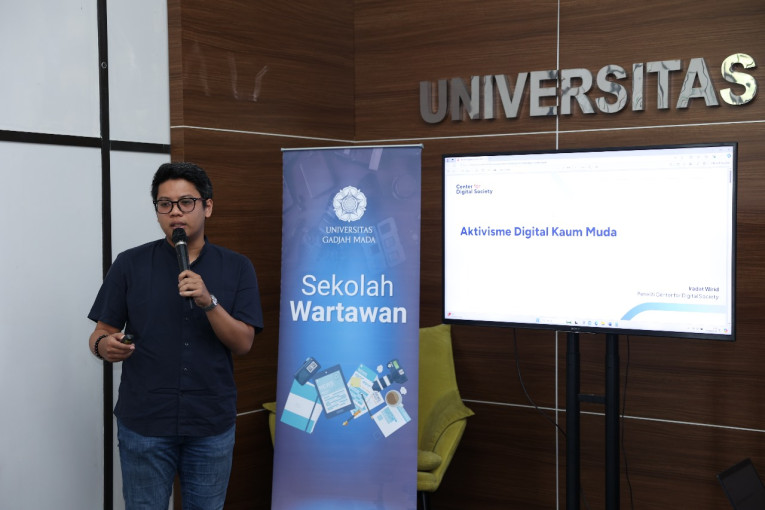
The rise of social media as a new internet and digital-based platform has significantly changed how messages and social criticisms are conveyed.
In Indonesia, there are 191 million social media users, 54% of whom are between 18 and 34 years old, and spend an average of 3 hours and 14 minutes per day on these platforms.
With its advantages in interactivity and networking, digital activism enables the crafting of messages in various forms, not only through writing but also through images or videos, significantly amplifying an issue.
“Digital activism should be understood as a choice made by individuals, communities, or local organizations to fight for something more actively, not just as a way to quickly disengage from the issue,” said Iradat Wirid, Deputy Executive Secretary of the UGM Center for Digital Society (CfDS UGM), on Wednesday (Sep. 25), during Sekolah Wartawan event held at the Fortakgama UGM room.
Wirid added that people often feel they have contributed to a social movement after signing a petition without further involvement until the issue’s goal is achieved.
This is why digital activism often fades halfway and never reaches its final objective, as people focus more on the quantity rather than the quality of their digital activities.
Wirid explained several reasons why young people choose social media for digital activism. Besides broad accessibility, low cost, the speed of information dissemination, interactivity, and public participation, organizing actions is also considered easier.
“The recent emergency protests almost entirely took place in digital spaces, with no in-person meetings. They simply created posters via Canva and shared them in groups they deemed influential for digital activism,” he said.
Moreover, anonymity, broader media reach, virality, and amplification are also important factors for young people when conducting digital activism on social media.
They often feel anxious or worried about missing out on important moments or opportunities to participate. Momentum and virality on social media are crucial for digital activism.
“Especially now, government decisions are often based on virality. An issue goes viral first; then it gets addressed, as we saw with the emergency protests which managed to change a policy,” Wirid added.
He also elaborated on the advantages of Twitter or X as a social media platform for digital activism in Indonesia.
According to him, X is considered better for communicating ideas and thoughts in digital activism through hashtags. These hashtags serve as reminders to users of ongoing social issues or movements.
With its more concise space, users are encouraged to write effectively to persuade others. Although it does not have as many users as other digital platforms, X has proven effective as a medium for “cooking up” issues until they are resolved.
“The user age range is also wide; for example, I’m sure Mr Mahfud MD manages his own account. So, although the number of users is not as large as Instagram and TikTok, social and political issues are widely discussed here, refined, and then uploaded to online media and other platforms,” he explained.
However, despite the ease of digital activism in championing many issues, challenges in regulatory and practical landscapes remain.
Cyberattacks such as hacking, social media account breaches, public dissemination of private data (doxing), silent internet throttling, and even network disconnection are examples of the government’s failure to regulate and enforce laws related to the protection of digital activism.
“The ITE Law (Information and Electronic Transactions) and PDP (Personal Data Protection) Law are actually vulnerable to being used to suppress critical voices against the government. So far, these legal rules are only applied to the public but not to the government. This needs to be addressed,” concluded Wirid.
Author: Triya Andriyani
Post-editor: Afif
Photographer: Firsto

